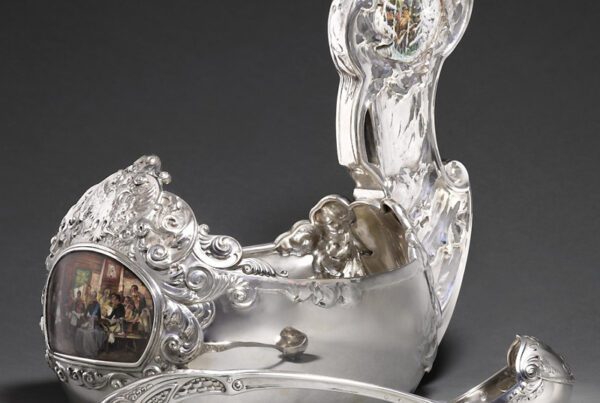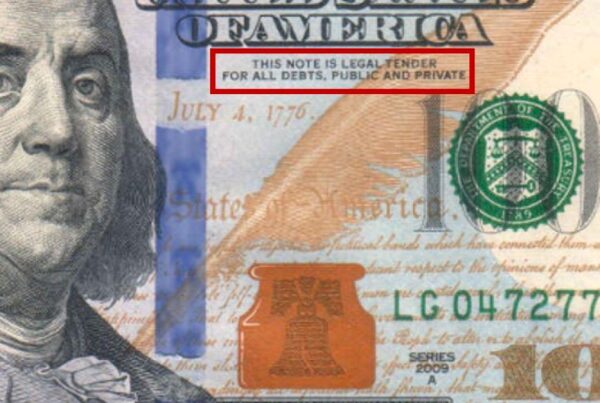Christie’s sale of the Harry Woolf Fabergé Collection on Monday November 29 totalled £5.2m (against a total estimate of £2.2-£3.2 million), with 84 of the 86 lots sold. Attendance was not as great as in the good old days, but a few people had jetted in from Russia and other parts of the world. Most of the bidding, however, was on the phone.
Woolf began collecting Fabergé in 1972 and made his fortune from a chain of London pharmaceutical outlets. He had a sure eye, a deep wallet and was an ardent, fervent Fabergé collector almost to the day that he died – buying over a period of many years either from Wartski directly, or under Wartski’s guidance at auction. Wartski Director Kieran McCarthy was understandably annoyed that Christie’s made no mention of this fact in either the sale catalogue or their PR material.
My old pal Geza von Habsburg, one of the world’s top Fabergé specialists, was head of Christie’s Geneva when he first met Harry Woolf over 40 years ago. Geza remembers Woolf as ‘a delightful friend with an acerbic sense of humour, exquisite taste, and a keen eye for the very best – always well advised by his good friend Kenneth Snowman of Wartski.’ In 1980/1 a dip in Woolf’s fortunes as founder and owner of Underwoods the Chemists obliged him to sell 57 items from his Fabergé collection at Christie’s Geneva (33 in November 1980, 24 in May 1981) – something that caused Woolf ‘considerable heartache,’ remembers Geza, ‘to the extent that he tried to cancel the sale of the second session, and later bought back a number of his favourite pieces.’ It is interesting to note that Christie’s omitted all mention of these two sales in the catalogue of their recent sale in London.
The sale predictably went very well. Estimates were not in line with reality and, as everyone had predicted, were frequently left for dead. Christie’s might as well not have bothered with them: estimates are supposed to represent market reality rather than consist of meaningless random numbers. As we saw with the sale of Fabergé items from the Brooklyn Museum at Sotheby’s a year ago, we know there are collectors out there who are eager and willing to spend a helluva lot of money on such things. And they did!
- Lot 1, A Jewelled Agate Model of A Cat by Fabergé
- Lot 17, A Large Jewelled Gold-Mounted Agate Model of A Capercalzie by Fabergé
Lot 1, a jewelled agate Kitten, was a case in point, selling for a premium-inclusive £137,500 (£110,00 hammer) against an estimate of £15,000-25,0000. Henrik Wigström’s gold mounted yellow chalcedony Duckling with olivine eyes made the same price (Lot 5, est. £25,000-35,000).
An agate Capercalzie (Lot 17) flew to £150,000, as did a Blue Tit carved from lapis lazuli, chalcedony, agate and onyx (Lot 12). A chalcedony Pouter Pigeon (Lot 11) fetched £112,500 and a Rhinoceros from Kalgan jasper, with its original box, brought a triple-estimate £100,000 (Lot 2).
Woolf’s 22 animals had a combined estimate of £470,000-690,000 but virtually tripled that to reap £1.64m. As I emphasized in my preview: all the creatures were in pristine condition, and half-a-dozen retained their original fitted cases.

Lot 21, A Jewelled Gold and Platinum Mosaic Brooch by Fabergé
The sale’s costliest item was a brooch with a mosaic-like bouquet of flowers, resembling a strip of embroidery (Lot 21) sold over the phone – to a Chinese-speaking jewellery (rather than Fabergé) specialist, I understand – for £350,000. That price was a mega-surprise for me, as I thought the £70,000-90,000 estimate more than sufficient. No doubt the frenzied bidding was inspired by the brooch’s stylistic and technical similarities with the Fabergé Imperial Mosaic Egg designed in 1914 by Alma Pihl, and executed by her uncle Albert Holmström as an a Easter gift from Nicholas II to his wife Alexandra (Pihl reputedly based her design on her mother-in-law’s needlework). Like the Mosaic Egg (now in the British Royal Collection), the brooch features platinum trellis-work set with diamonds, rubies, topaz, sapphires, garnets and emeralds.

Lot 47, A Rare Gold-Mounted Enamel, Nephrite and Rock Crystal Study of Wild Strawberries by Fabergé
The gold-mounted enamel, nephrite and rock crystal study of Wild Strawberries in a Glass (Lot 47), predicted to be the sale’s biggest seller, rated £325,000 (£260,000 hammer) – somewhat disappointing. I thought it would do a lot better.
A gold and guilloché enamel bonbonnière aping the Corno Ducale worn by the Doges of Venice, embellished with rubies, emeralds, diamonds and pearls, doubled low-estimate on £162,500 (Lot 26). Same price for a silver-mounted aventurine quartz tray with a silver goose and gander tugging at a nephrite frog (Lot 61, est. £40-60,000).
Pick of the Collection’s nine photo frames were a tricolour gold and moss agate frame shaped like a kite at £187,500 (Lot 41), followed by a frame in the form of an artist’s easel at £137,500 (Lot 32). Both had estimates of £80,000-120,000.
- Lot 26, A Jewelled And Enamel Gold Bonbonnière in The Form of A Doge’s Hat by Fabergé
- Lot 41, A Jewelled Three-Colour Gold and Moss Agate photograph Frame by Fabergé
Wartksi themselves bid successfully on ten items, mainly over the phone – but I, with my eagle-eye, spotted Kieran McCarthy lurking in the saleroom himself, to personally make sure of two lots. First he lavished £162,500 on a gold and guilloché enamel bonbonnière aping the Corno Ducale worn by the Doges of Venice, embellished with rubies, emeralds, diamonds and pearls (Lot 26, est. £80,000-120,000); then £42,500 on an egg-shaped moss agate pill-box by Perkhin, mounted with gold and guilloché enamel (Lot 35, est. £8,000-12,000).
Thirty lots out of 86 were purchased by Harry Woolf’s own son, James, present in the saleroom with a striking, statuesque, incredibly smartly dressed brunette from Poland who calmly did the bidding and flirted with me afterwards in a French accent. James told me he loved living with all the Fabergé bits during his youth, and wished to restart the Woolf Fabergé Collection.
Harry Woolf’s collection numbered about 150 pieces in total. The remaining items are still shared or owned by James’ mother and his siblings, none of whom are Fabergé collectors. Fourteen pieces are in the current Fabergé In London exhibition at the V & A.
Prior to the Christie’s sale, James offered to buy out his family’s part of the collection for £6 million so that he could set up a Fabergé Museum in Prague. The offer was rejected. The sale total was around £4.2m hammer – on top of which Christie’s pocketed over £1 million in buyers’ premiums (plus whatever vendors’ commission they may have been charging the Woolf family). How on earth can it make sense to sell via Christie’s rather than negotiating a deal with another family member? In a press interview ahead of the sale, James’s mother claimed that selling the Fabergé collection was a tribute to, and celebration of, her late husband’s memory. Really? Dumping a family collection counts as a tribute or a celebration? Keeping the collection in the family, promoting it and setting up a museum would have been a more admirable way of acclaiming Harry. Stashing millions in the bank is hardly a celebration of a guy’s life and passion!













